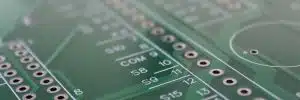JHY PCB Blog Hub
Your Source for Expert PCB Design, Manufacturing, and Assembly Insights – Stay Informed with 2025 Trends!
Exploring the Fascinating World of Micro Cameras: Capturing Life in Tiny Details
Micro cameras, often referred to as miniature imaging devices, have revolutionized the way we capture and document our surroundings, offering unprecedented detail in remarkably compact formats.
According to a recent report by MarketsandMarkets, the global micro camera market is projected to reach $3.7 billion by 2026, growing at a CAGR of 14.2% from 2021 to 2026.
This rapid growth is driven by advancements in technology, including enhanced sensor capabilities and imaging quality, which allow these devices to be used in various applications, from surveillance and medical imaging to wildlife photography and industrial inspection.
As we delve deeper into the fascinating world of micro cameras, we uncover how these tiny yet powerful tools can capture life's intricate details, revealing a realm of visual storytelling previously reserved for larger camera systems.
Understanding Micro Cameras: Definition and Technology Behind Them
Micro cameras, tiny devices that can produce impressive images despite their size, have seen significant advancements in technology over recent years. Defined as cameras with a sensor size smaller than one inch, these cameras utilize miniature optics and sensors to capture detailed visuals. According to a report by MarketsandMarkets, the global micro camera market is expected to grow from USD 4.38 billion in 2020 to USD 9.8 billion by 2025, fueled by the increasing demand in sectors such as security, healthcare, and consumer electronics.
The technology behind micro cameras primarily includes advanced imaging sensors like CMOS (Complementary Metal-Oxide-Semiconductor) and cutting-edge lens design, which allow for high-resolution images in compact forms. These innovations not only enhance the image quality but also contribute to reduction in power consumption and increased camera durability. For example, modern micro cameras can provide resolutions exceeding 4K, which was previously unattainable in such small units.
**Tips:**
1. When purchasing a micro camera, consider factors like sensor size and lens quality to ensure optimal image capture.
2. Test the camera in various lighting conditions to evaluate performance, as poor lighting can significantly affect image quality.
3. Utilize stabilization features if available, as it can help in achieving clearer images, especially in dynamic settings.
Understanding Micro Cameras: Popular Uses and Adoption Rates
The Evolution of Micro Cameras: A Brief History and Key Innovations
The evolution of micro cameras is a testament to technological ingenuity, transforming the way we capture and perceive the world around us. Initially, these miniature devices emerged in the late 20th century, primarily used in niche applications like medical endoscopy and surveillance. Over the years, advancements in lens manufacturing and sensor technology have led to the miniaturization of components, enabling more versatile uses beyond conventional photography.
As the demand for discreet and high-quality imaging grew, innovations such as CMOS sensors and digital storage began to redefine the capabilities of micro cameras. Today, they are essential tools in various fields, from wildlife documentaries to security systems, offering unseen perspectives and enabling users to capture moments that often go unnoticed.
**Tips**: When using micro cameras, always consider lighting conditions, as these can significantly affect image quality. Additionally, practice stabilization techniques to avoid shaky footage, especially in dynamic environments. Lastly, familiarizing yourself with different attachment options can enhance the versatility of your micro camera, allowing you to explore unique angles and perspectives.
Applications of Micro Cameras: From Medicine to Wildlife Observation
Micro cameras have emerged as revolutionary tools across various fields, showcasing versatility and precision in capturing detailed imagery. In the medical sector, micro cameras are invaluable for minimally invasive surgeries. According to a report by MarketsandMarkets, the global market for micro camera technology in healthcare is projected to reach $1.5 billion by 2026, driven by advancements in surgical techniques and increased demand for diagnostic imaging. These tiny lenses allow surgeons to operate with enhanced visualization of intricate structures, significantly improving patient outcomes and recovery times.
In wildlife observation, micro cameras are playing a crucial role in conservation efforts and animal studies. The use of these compact devices enables researchers to monitor elusive species without disrupting their natural behaviors. A study published in the journal "Ecological Applications" highlighted that remote micro cameras have increased species detection rates by up to 30%, providing valuable data for biodiversity assessments. This application not only aids researchers in understanding animal behavior and habitats but also supports efforts in protecting endangered species by offering insights previously unattainable with traditional observation methods.
Challenges and Limitations of Micro Camera Technology
Micro cameras have revolutionized various industries, from medical applications to security surveillance. However, challenges and limitations persist in their use. One primary issue is the trade-off between size and performance; while miniaturization enables remarkable portability, it often compromises image quality. According to a market report from Research and Markets, the global micro camera market is expected to grow at a CAGR of 15.9% from 2021 to 2026, highlighting innovation in this space, yet manufacturers must navigate the persistent limitations of sensor resolution and low light performance.
Another significant challenge is the cost of production and development. High-quality micro cameras require advanced technology and materials, which can inflate prices, making them less accessible for some applications. The integration of these cameras into devices also presents technical hurdles, as ensuring reliable connectivity and power management in cramped spaces can be complex. Tips for overcoming these challenges include focusing on modular designs that allow for easy upgrades and maintenance, and investing in adaptive technology that can enhance low-light performance without increasing size.
Furthermore, regulatory constraints can also impact the development of micro camera technologies, particularly in sectors such as surveillance and healthcare. Compliance with data protection laws is critical, necessitating that developers remain informed about the legal landscape. Engaging with regulatory bodies early in the development process can streamline approval and deployment.
Exploring the Fascinating World of Micro Cameras: Capturing Life in Tiny Details
| Feature | Specification | Challenges |
|---|---|---|
| Resolution | Up to 4K | Limited battery life due to high demand of processing power |
| Size | Typically under 1 inch | Fragility due to small components |
| Field of View | Wide angle up to 120 degrees | Distortion at edges can affect image quality |
| Storage | MicroSD support up to 512GB | Limited internal processing capabilities |
| Connectivity | Wi-Fi and Bluetooth enabled | Interference may affect performance |
| Application | Surveillance, medical imaging, and wildlife observation | Privacy concerns in surveillance applications |
Future Trends in Micro Cameras: What Lies Ahead in Miniature Imaging
The evolution of micro cameras is poised to revolutionize various industries, from healthcare to security. According to a recent market report by Research and Markets, the global micro camera market is expected to grow significantly, reaching approximately $7 billion by 2026, driven by advancements in technology and increasing demand for compact imaging solutions. This growth indicates a strong trend toward miniaturization, enabling cameras to be integrated into devices previously deemed impractical, such as wearable tech and even automotive applications.
Looking ahead, several key trends are expected to shape the future of micro cameras. One of the most critical developments is the integration of artificial intelligence and machine learning algorithms, which will enhance image processing capabilities and automate functions such as facial recognition and object tracking. Additionally, the rise of 5G technology is likely to impact micro camera applications, facilitating real-time data transmission and opening doors for innovations in remote monitoring and smart surveillance systems. Overall, the intersection of miniaturized imaging technology and connectivity is set to unlock new possibilities, making micro cameras an essential component of the digital future.










